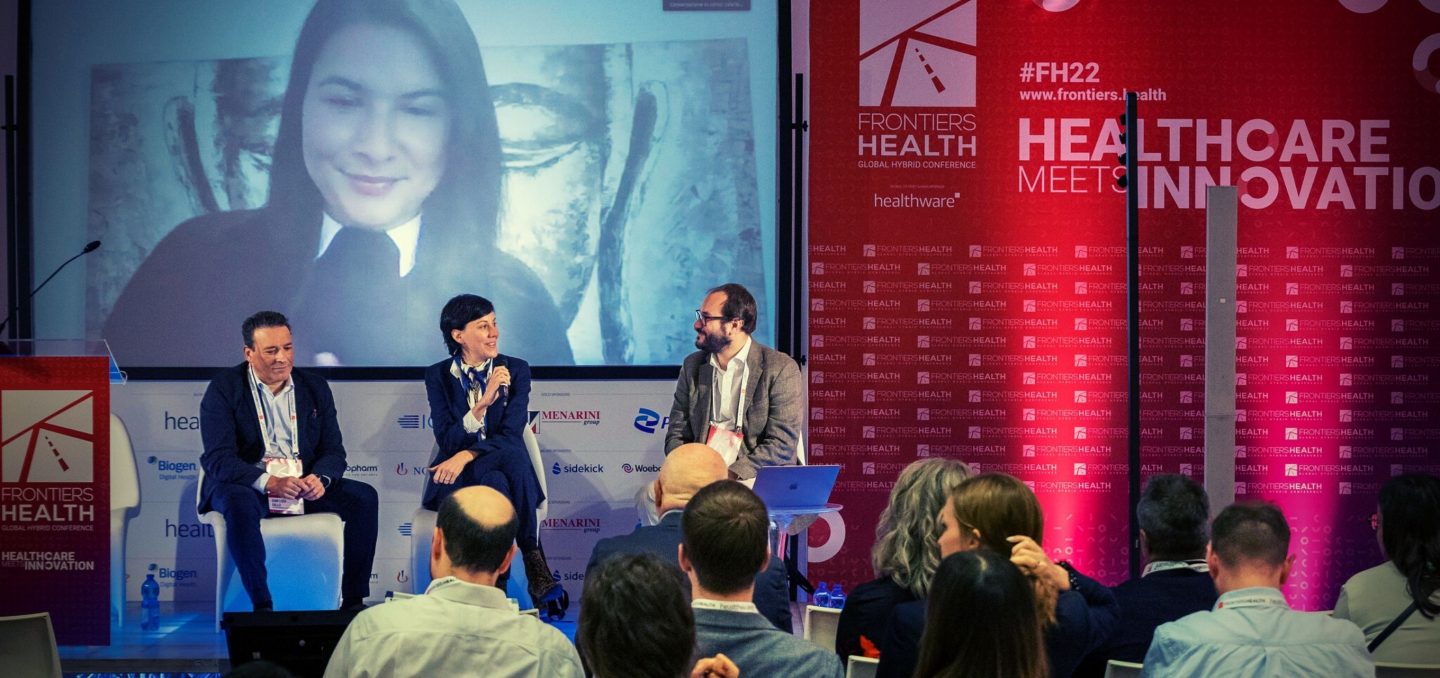When we talk about innovation within a Pharma Company, we should relate to its core mission that is to use innovative science and technology to address some of society’s most challenging healthcare issues by discovering and developing breakthrough treatments and find new ways to deliver them to as many people as possible.
Disruptions in the Healthcare Systems
We are facing unique times in terms of technologies and assets discovered and delivered to the market at unprecedented rate. This fast pace is putting health care systems in distress affecting infrastructures, assets, competences and capabilities, process and procedures in addition to the recent Covid-19 pandemic that further underscored challenges in healthcare provisioning. The pandemic has compromised hospital infrastructure capacity worldwide and has brought increased morbidity, risk of chronic diseases, and mental health problems that still impact the healthcare sector worldwide.
Within this new perspective, for the first time in many years, the Italian Health System may not have a problem with financial resources. Although caution urges the use of conditional, it is a fact that we are facing a historical novelty, as the 20 billion euros allocated to healthcare by the NRRP substantially changes the health world’s outlooks and induces more than reasonable optimism.
From a more traditional approach to an innovative model
In recent years pharma Companies have made progress towards a strong patient centric approach that has been in the past mostly delivered through and around healthcare professionals while a key paradigm shift would be to perceive the whole healthcare ecosystem composed by a broader spectrum of stakeholders and take their views into account because no one company can do it alone. Success requires integration with the external life science ecosystem: patients and patients’ association, HCPs, nurses, scientific institutions, national and local payers, technological and innovation districts, players from other industries, startups, universities, and research centers.
The Healthcare sector is an industry notoriously highly regulated, and traditionally behind in innovative transformation. To be truly innovative, therefore, collaboration and cooperation becomes the keys to success. That is why it is so important to adopt the Open Innovation paradigm, to be open to the outside world and work in partnership for the co-creation of new innovative solutions to transform the healthcare system.
Pharma Companies may then play a pivotal role within this evolutionary process by enabling the setup of Private-Public-Partnerships and bringing a solid expertise in multiple therapeutic areas, data generation capabilities, patient journey understanding and patient management optimization to sustain local ecosystems evolution.
To succeed each of these partnerships between public and private entities should follow a strong methodological approach: an exhaustive investigation of needs, a deep knowledge of current state of the art in terms of competences, assets and regulations, identification of clear pain points along the patient journey, development of a clear blueprint, without forgetting the crucial importance of sustainability and scalability stress test of the blueprints designed.
Rules to ensure a successful long-term efficacy
To ensure a long-term strategy is important to focus on four main rules:
- Sustainability first: the concept of sustainability becomes crucial to guarantee that the development of innovative solutions and projects could self-sustain and remain on the market over time without the need for continuous economic financing from third parties. Hence, it is important that whenever a pharmaceutical company introduces a new, innovative solution on the market or within a hospital center, it must be ensured that this solution remains available to doctors and patients even after the end of the project. For this reason, it is necessary to limit investments in sponsorships and keep pushing for other types of collaborations such as partnerships which, incidentally, are also important to allow the constant exchange of information and competencies between partners and ensure the company itself can boost its skill set.
- Understand the status quo: to ensure successful implementation of solutions and projects, it is necessary to start from an in-depth analysis and assessment of the context. Indeed, even if the solution may seem to be perfect in all its features at first, it does not necessarily mean it can work perfectly anywhere and with anyone: it may not be the right time nor the right customer. It is then compelling to fully understand the needs of our stakeholders and their reference context, mapping all the actors involved in the process, their level of competences and capabilities, constraints in time and, last but not least, understanding their existing assets and future infrastructural investments
- Scalability is key. Projects should be designed to maximize learning curves in other therapeutic areas, different hospitals, and different geographies. Prioritizing scalability since the beginning is an essential aspect for this kind of projects, as its lower development, implementation, and maintenance costs, facilitates supplier/partners relationships and, above all, allows the improvement of an always better user experience for our patients and HCPs.
- Don’t waste it all: we should not start from scratch but understand what can be valued and build on it. By constantly monitoring and keeping in mind good existing solutions within the company and on the market, we should be able to develop innovative solutions starting from the existing ones and build on them according to our needs. Without reinventing the wheel every time, we would be able to not only save time and resources, but also to make processes more efficient and leave room for the design and the implementation of further initiatives.
Technology is an enabler and not the end goal
In this context, it is important to better understand the role and importance of technology. Digitalization of medicine and healthcare is part of a global transformation defined as the fourth industrial revolution, which sees the widespread of technological innovations in the fields of connectivity, information control and data applied to the production of goods and services. Especially after the Covid-19 pandemic, the healthcare sector has undergone an epochal transformation that has seen the continuous arrival of new technologies and their evolution. However, we have recently witnessed a sense of urgency in enabling technologies investments that were “hyped” without having a clear sense of the problem it was meant to be solved.
It is therefore important to remember that technology and digital solutions, are not the ultimate goal but just the enablersand they should be part of 360° transformation, meaning processes and procedures as well as change management plans should come together with any transformation.
In conclusion, considering the challenges that the future holds for us, we should decidedly define a new way of working to sustain the healthcare ecosystem evolution in the long term, starting from the exploration of forms of collaboration between the public and private sectors.



